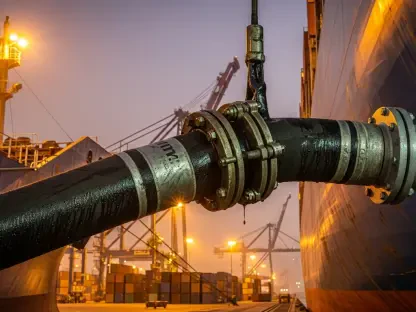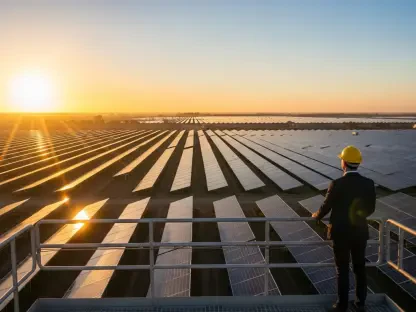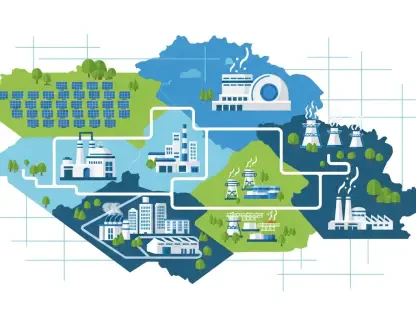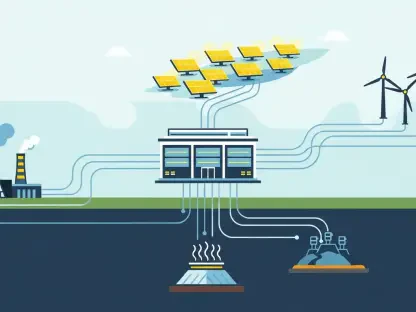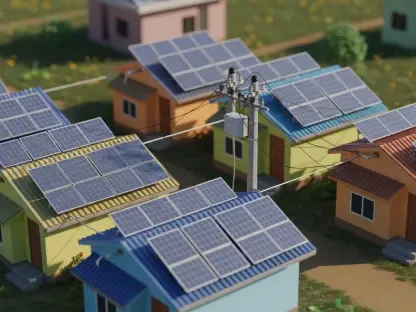In today’s fast-paced digital world, the demand for electricity in America is skyrocketing after a period of stagnation, driven by the increasing presence of artificial intelligence and energy-hungry data centers. Christopher Hailstone, a respected authority in energy management, renewable resources, and grid reliability, shares his insights into the challenges and potential solutions for America’s aging electrical network. Join us as we delve into the complexities of electricity demand and explore innovative strategies to fortify the power grid for a sustainable future.
Can you elaborate on why America’s electricity demand is experiencing a sudden surge after being stagnant for a decade?
The demand for electricity is surging primarily due to the widespread adoption of artificial intelligence and the establishment of numerous data centers. These entities require substantial amounts of power to function efficiently, marking a pivot from a stable demand to a drastic increase nearly overnight. As more technologies emerge and industries become increasingly digital, this transformation fuels the need for energy at levels we haven’t seen before.
What factors are contributing most to the increased electricity demand in the U.S.?
Beyond the technological advancements like AI, the electrification of various sectors, particularly transportation, plays a significant role. Electric vehicles and smart grids are pushing the demand further. The U.S. infrastructure must adapt to accommodate these changes, presenting both challenges and opportunities for energy management and grid innovation.
How is the current state of America’s power grid inefficient, and what percentage of electricity is wasted due to these inefficiencies?
America’s power grid is infamous for its inefficiencies, with estimates suggesting that around 10% of electricity is wasted annually. This loss results from outdated transmission systems and a lack of modern technology integration, causing an unnecessary drain on resources. Such inefficiencies highlight the urgent need for grid modernization and improved energy management practices.
Could you explain the analogy of America’s grid being like an aging bridge? How does this relate to the challenges the grid is facing?
Picture the grid as an old bridge; as more traffic crosses, the structure’s integrity weakens over time. Similarly, America’s power grid wasn’t designed for the immense demand placed on it today. Just as an aging bridge requires foundational redesign rather than superficial repairs, our grid needs a fundamentally new approach to handle current and future demands sustainably and efficiently.
What happened during the grid crash in Spain and Portugal, and how can the U.S. prevent a similar occurrence?
The grid crash in Spain and Portugal underscored the dangers of inadequate resilience measures and an overreliance on renewable energy without stable base load power. The imbalance between generation and demand led to a cascading failure. The U.S. must prioritize real-time monitoring, improve grid resilience, and establish a diversified energy mix to prevent similar occurrences.
Why are demand-side energy management systems considered the most impactful and cost-effective solution for improving energy efficiency?
Demand-side energy management systems are essential because they bring power management closer to the end-user, increasing flexibility and efficiency. By shifting focus to localized control, these systems reduce reliance on large, distant power plants and transmission infrastructure, offering immediate savings and improved grid performance.
What are microgrids, and how do they support energy management platforms?
Microgrids are autonomous, local energy systems capable of operating independently from the main grid. They integrate various power sources, such as solar panels and batteries, offering real-time visibility and reliability. As part of the larger energy management framework, they enhance resilience, enabling efficient power distribution and load management.
How can microgrids relieve strain on the main power grid, and what are the potential benefits for consumers and businesses?
Microgrids relieve strain by decentralizing energy generation and providing backup during peak demands. For consumers and businesses, they mean reduced utility costs, enhanced power reliability, and the potential for sustainability through renewable sources. This shift can foster a more stable and adaptable energy landscape.
How could moving power generation closer to end-users lead to cost savings, and what role does AI-powered monitoring play in this?
When power generation is localized, energy travels shorter distances, reducing transmission losses and cost. AI-powered monitoring offers insights into energy consumption patterns, facilitating more precise control and optimization, which can drastically cut expenses and minimize waste.
What are the specific advantages of on-site power generation through microgrids for operations managers?
Operations managers benefit significantly from on-site generation by ensuring continuous power availability, mitigating peak demand charges, and improving energy quality. Microgrids provide a reliable safety net and enhance operational efficiency, critical in maintaining seamless business activities.
How do microgrids support sustainability and reduce emissions?
Microgrids support sustainability by embracing renewable energy sources, such as wind and solar. By minimizing the reliance on fossil fuels and integrating cleaner technologies, they help lower carbon footprints and promote a more eco-friendly energy model that aligns with global environmental goals.
Why is it important for high-demand power users to invest in on-site power sources and microgrids?
High-demand users can significantly ease grid pressure by using localized power sources. Not only do they enjoy greater control and reliability, but this approach creates a robust energy network that’s adaptive to their specific needs, fostering resilience and capacity where it’s needed most.
What role do forward-thinking policies play in supporting demand-side innovation and grid improvements?
Innovative policies are crucial, as they incentivize the adoption of newer technologies and grid improvements. They ensure utilities and consumers collaborate effectively to design systems that are not only sustainable but capable of meeting future energy needs. Such policies pave the way for a resilient grid infrastructure that can stand the test of time.
Can you discuss examples of utility programs like Florida Power & Light’s Commercial Demand Reduction program?
Utility programs, like Florida’s Commercial Demand Reduction, exemplify proactive measures to curb peak demand. By encouraging commercial users to reduce usage voluntarily, especially during high-demand periods, these initiatives enhance network efficiency and prevent potential grid overloads.
What steps should utilities take to work collaboratively with large-scale customers to improve the grid network?
Utilities should engage in partnerships with large customers, sharing the vision for more effective energy management. Open communication, incentive schemes, and shared technologies will empower customers to contribute to grid enhancement actively, crafting a network that serves broader societal interests efficiently.
How can an innovative engineering mindset help address the challenges facing America’s power grid?
Embracing an innovative engineering mindset means prioritizing creativity and future-ready solutions. By focusing on advanced technologies and adaptive infrastructure designs, engineers can transform today’s challenges into opportunities, fostering a grid that’s resilient, efficient, and capable of meeting tomorrow’s demands.
What is your forecast for the future of America’s power grid?
The power grid in America is poised for a transformation. With continuous advancements in technology and a collective push towards renewable energy, I anticipate a shift towards decentralized power generation and smarter grid management. This future promises a sustainable, reliable network that can withstand the evolving demands of modern society and technology.


